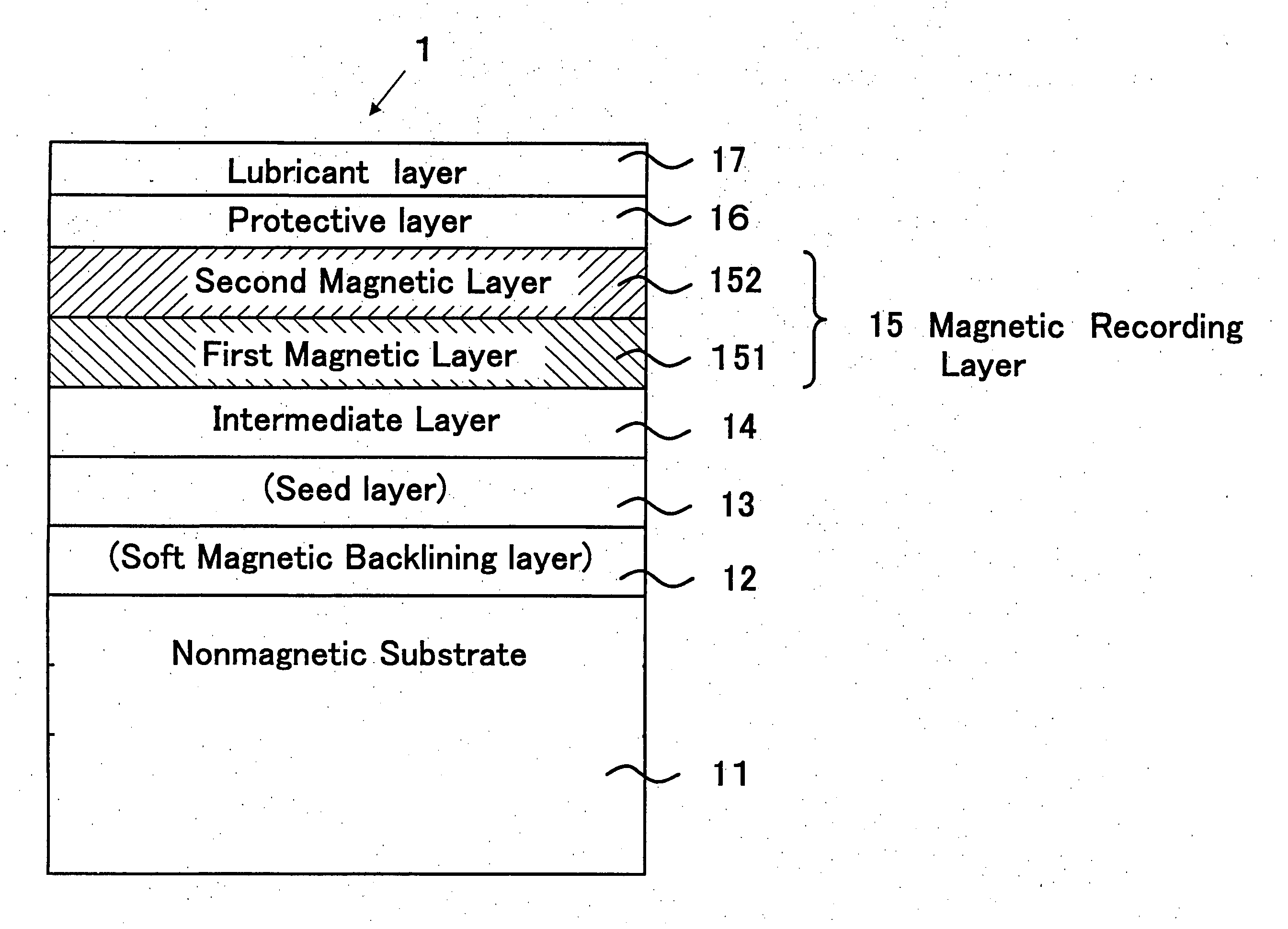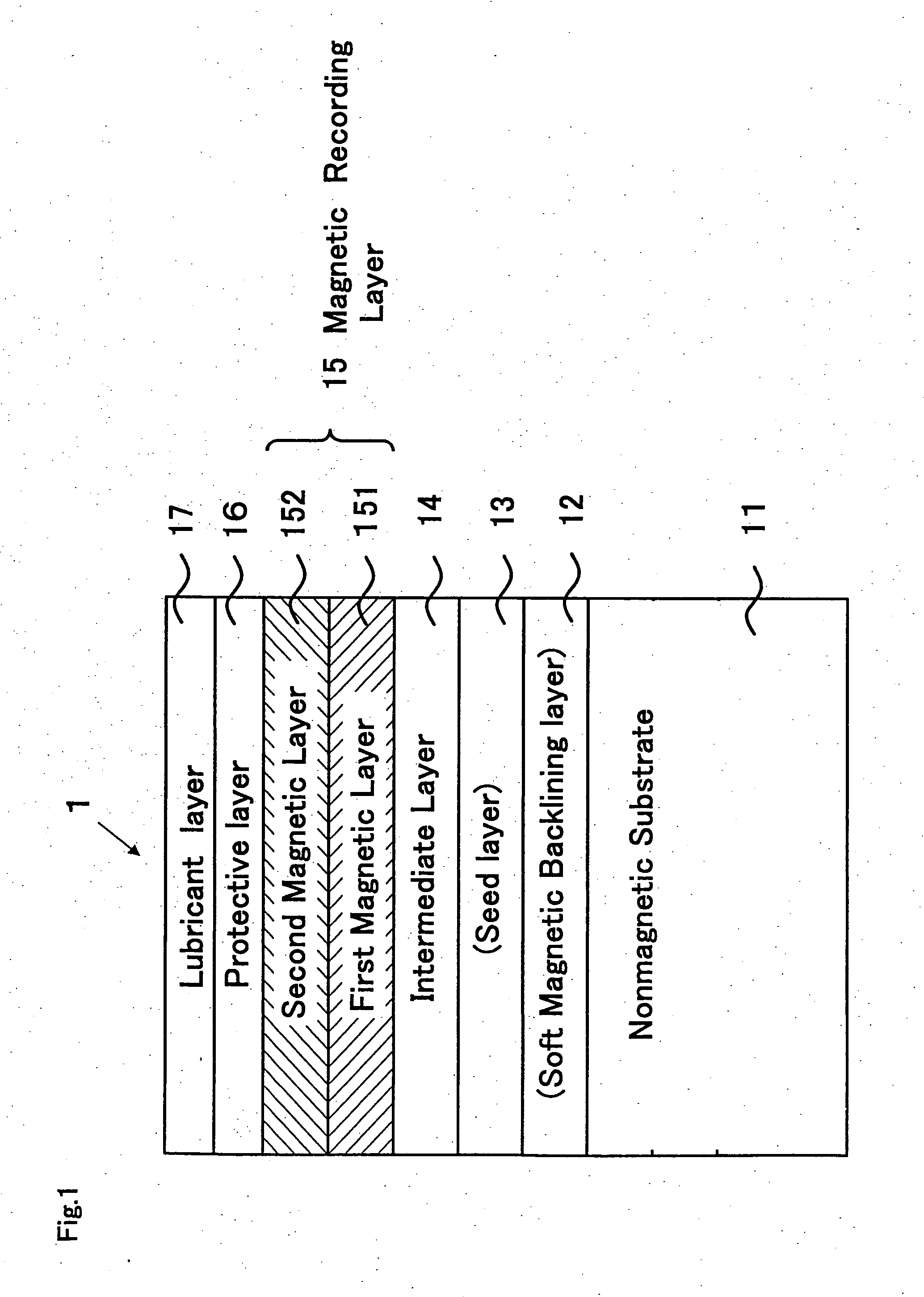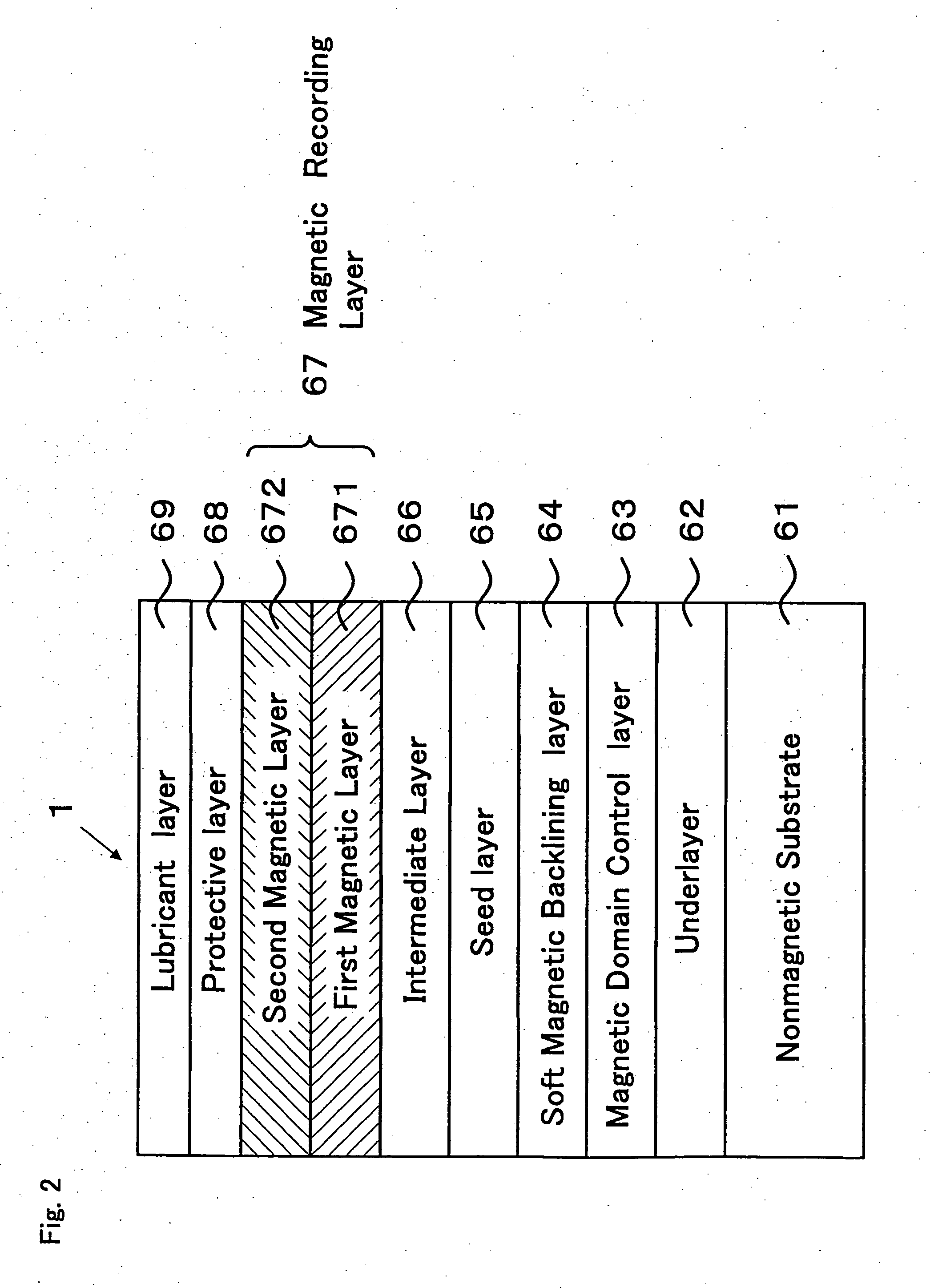Perpendicular magnetic recording medium and a method for manufacturing the same
a technology of magnetic recording medium and perpendicular magnetic, which is applied in the field of perpendicular magnetic recording medium, can solve the problems of reducing the magnetic interaction between the magnetic grains, affecting the durability of this type of device, and substantial degradation of the durability of the medium, so as to enhance the corrosion resistance, improve the electromagnetic conversion characteristic, and improve the recording density
- Summary
- Abstract
- Description
- Claims
- Application Information
AI Technical Summary
Benefits of technology
Problems solved by technology
Method used
Image
Examples
example 1
[0059] Perpendicular magnetic recording medium 1 as shown in FIG. 1 was produced in Example 1 except that seed layer 13 in FIG. 1 was not provided. Nonmagnetic substrate 11 was a chemically reinforced glass substrate with a smooth surface (for example, N-5 glass substrate made by HOYA Corporation). After cleaning, the substrate was put into a sputtering apparatus. Sequentially deposited layers were amorphous soft magnetic backlining layer 12 of CoZrNb 200 nm thick, intermediate layer 14 of ruthenium with a thickness of 30 nm, first magnetic layer 151 having a thickness of 20 nm deposited by an RF sputtering method using a target of CoCrPt—SiO2, and second magnetic layer 152 having a thickness of 10 nm deposited using a target of CoCrPtB. The first magnetic layer and the second magnetic layer were formed in various conditions of sputtering gas pressures in Example 1. After depositing protective layer 16 of carbon 5 nm thick, the substrate was taken out from the vacuum chamber. Finall...
example 2
[0066] Heat treatment after deposition process of the magnetic recording layer is conducted in Example 2. Magnetic recording media of Example 2 were produced in the same manner as in Example 1 except that substrate heating before deposition (pre-heating), and heating after deposition of the second magnetic layer (post heating) and subsequent fast cooling were conducted in one apparatus. Gas pressures in the deposition process were 50 mTorr for the first magnetic layer and 5 mTorr for the second magnetic layer, and not varied throughout the media of Example 2.
[0067] Preheating temperature was 200° C. and post heating temperature was 200° C. Fast cooling step subsequent to the post heating was adjusted so that the substrate temperature cooled down to 100° C. in 10 sec. Coercivity Hc and SNR were measured on media with or without each of the three heat treatment steps. Table 3 summarizes the results.
TABLE 3pre-postfastHcSNR atheatingheatingcooling(Oe)350 kFCI (dB)nonenonenone3,50017...
example 3
[0069] Magnetic recording media were produced in the same manner as in Example 1 except that intermediate layer 14 with a thickness of 30 nm was formed of various materials. Gas pressures in deposition processes were 50 mTorr for the first magnetic layer and 5 mTorr for the second magnetic layer, and not changed throughout the media of Example 3. Table 4 summarizes half width Δθ50 of a rocking curve of hcp (002) diffraction line of the magnetic recording layer measured by X-ray diffraction. Table 4 includes the cases of intermediate layers formed of tantalum and chromium both having a bcc structure for comparison.
TABLE 4intermediate layerintermediate layerΔθ50materialcrystal structure(deg)Ruhcp5.0Re5.6Os6.5Ti8.1Ru-20% W4.9 Ti-10% Cr7.5Tabcc25.0Cr20.4
[0070] Table 4 indicates improvement of Δθ50 by the intermediate layers composed of materials having an hcp structure as compared with the intermediate layer of tantalum and chromium having a bcc structure, demonstrating effective cry...
PUM
| Property | Measurement | Unit |
|---|---|---|
| Pressure | aaaaa | aaaaa |
| Pressure | aaaaa | aaaaa |
| Grain size | aaaaa | aaaaa |
Abstract
Description
Claims
Application Information
 Login to View More
Login to View More - R&D
- Intellectual Property
- Life Sciences
- Materials
- Tech Scout
- Unparalleled Data Quality
- Higher Quality Content
- 60% Fewer Hallucinations
Browse by: Latest US Patents, China's latest patents, Technical Efficacy Thesaurus, Application Domain, Technology Topic, Popular Technical Reports.
© 2025 PatSnap. All rights reserved.Legal|Privacy policy|Modern Slavery Act Transparency Statement|Sitemap|About US| Contact US: help@patsnap.com



